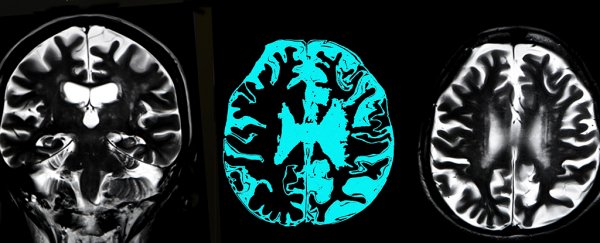We're learning more and more about Alzheimer's every day, but how it gets started and takes hold remains something of a mystery. Now, for the first time, scientists have observed the structure of the disease-associated protein clumps as they've formed in the brain, rather than in the lab.
Researchers were able to extract and isolate amyloid beta (Aβ) fibrils from the brains of three people who had died of Alzheimer's disease; then, they analysed these protein clumps to determine the details of their structure.
The team, including scientists at the University of Queensland in Australia and Ulm University in Germany, used electron microscopy (tracing shapes with electrons at very small scales) to get a closer look at the fibrils, finding they were built very differently from proteins we can culture in the lab.
These toxic build-ups of protein kill off nearby cells, but it's not clear how they clump together or why the body doesn't wash them out. Knowing more about how these fibrils are constructed could help us to solve those mysteries.
"Most importantly, the observed structure differs profoundly from the known structures of Aβ fibrils that were formed in vitro," write the researchers in their published paper.
The results of this study indicate that if we're going to find drugs that can clean out clogged up amyloid beta protein, we can't necessarily rely on testing the drugs on fibrils we've produced in a test tube – what's going on inside the brains of those with the disease might be very different.
The way the proteins were folded wasn't the same as what we've seen before, the researchers report, and the fibrils had a right-hand twist, rather than a left-handed one.
What's more, the study found structural variations between fibrils too, emphasising the need for a personalised approach in the treatment of Alzheimier's disease. These variations were present in all three sample brains, but the team isn't ruling out the possibility that more might be found.
While the research leaves some gaps in our understanding of the geometry of amyloid beta fibrils, it's a useful step forward in knowing exactly what we're dealing with when it comes to Alzheimer's and the way it fogs up the brain.
Recent research has suggested that Alzheimer's might have a bacterial origin, that it's an infection we somehow pick up when our bodies' self-defence systems are down, but there are lots of questions still to be answered. What's easier to quantify are the end results, which include the degeneration of brain neurons.
Progress is being made though. We're now seeing encouraging results in limited, small-scale trials of Alzheimer's treatments: reversing cognitive decline in some human patients, and using light and sound to clear out protein plaques in mice.
"The consequence of these observations is that targeting specific fibril morphologies with appropriately selective inhibitors may represent an attractive strategy to interfere with the disease process," conclude the researchers in their paper.
The research has been published in Nature Communications.
